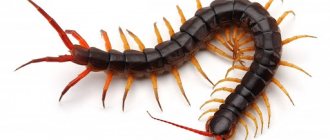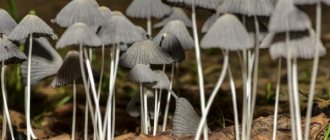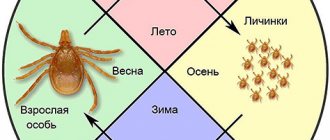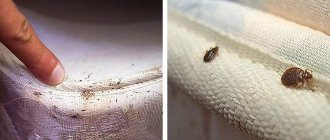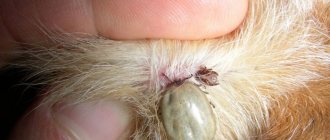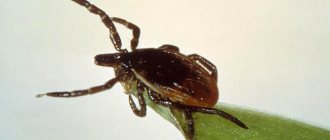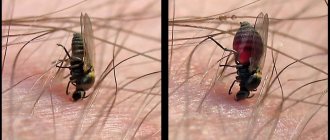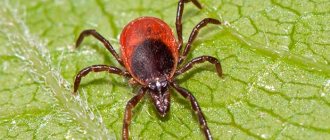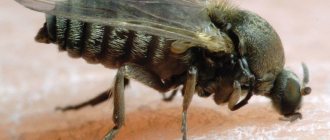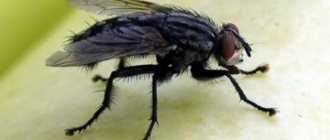Description of the bell mosquito, its activity and life cycle. Do mosquitoes bite? The benefits of twitchers for nature. How to deal with chironomids using chemical, mechanical, or folk remedies?
Chironomid is a bell mosquito that belongs to the Diptera family. They are distinguished by the inability to eat food because they have an underdeveloped oral apparatus. Bell bell larvae consume microorganisms and detritus. Some of them may belong to the order of predators.
This type of mosquito lives near water bodies, their favorite place is thickets of reeds. It is worth noting that they do not pose any danger to people.
Distinctive features of life
Bell mosquitoes are the most common and largest family of long-whiskered, dipterous insects with a complete metamorphosis process; they thrive in the modern world because they are characterized by ecological plasticity.
It is worth noting that the longest period of their life is the larval stage; in time it can range from a couple of weeks to two years of age. You can see what the bell mosquito looks like in the photo.
Thanks to the high level of ecological adaptability developed during the evolution of the presented family of mosquitoes, they are characterized by the presence of ample opportunities that allow them to quickly develop new habitats created by humans.
If there are favorable conditions for the habitat of chironomid larvae, they are dominant if we take into account other benthic invertebrate inhabitants of the river/lake.
It is impossible not to note their important role in the processing of organic substances into minerals, as well as their participation in the purification of water sources.
In addition, they are the most valuable food item (when compared with other bottom animals) for industrial benthic-eating fish. Bell mosquitoes are an amphibiotic insect that is actively used by researchers to determine the quality, level of pollution, and trophicity of water bodies.
The change in the abundance of the mosquito (another name for chironomids) in the bottom biocenosis of a reservoir is due to the fact that they pass from the stage of the preimaginal type to the imaginal type, in other words, they become a heterotopic insect whose lifestyle becomes air-water.
The nuclei of salivary gland cells in larvae are characterized by the presence of polytene chromosomes, which is why they are used by cytogeneticists and molecular biologists to conduct laboratory-type studies, while they act not only as a model for studying the process of biological synthesis, analysis of morphogenetics of divergence, but also as an object of cytogenetic research.
An important stage for the settlement of bell mosquito larvae is the laying of eggs. According to some studies, it is believed that females prefer to lay eggs where pupal exuviae accumulate (massive flights of mosquitoes take place here, after which the occupied niche becomes vacant for some time).
Others think that they choose an area for laying eggs where the larvae live and develop. But the choice of location can also be influenced by the conditions required for the normal course of the process of embryonic development of the insect, which is why females in the rheophilic faunal complex attach clutches to the hard substrate of the shore, so the process of embryo development itself takes place in a moist environment, and not under water.
But females in the limnophilic faunal complex are characterized by laying unattached eggs, lowering them into the natural layer of the clutch, as a result, the embryos develop in an aquatic environment. The larvae are able to move from lake to river, as well as from river to lake, without any obstacles or difficulties.
What happens if mosquitoes disappear
A mass extinction of flies on earth would be considered an environmental disaster. The complete disappearance of blood-sucking insects also poses a considerable danger. We know which country has no mosquitoes - Iceland. And the people living there do not face environmental problems. But this is the exception rather than the rule. If there were no mosquitoes on the ground, the following unpleasant moments would arise:
- Many species of fish have disappeared from the lakes.
- In reservoirs, the number of plants that feed on the larvae of blood-sucking insects has decreased.
- Plants pollinated by mosquitoes have disappeared.
- Some bird species have left the cities. Among them are swallows and swifts. Bird populations in the Arctic tundra would also decline.
- The number of other “vampires” has increased: horseflies, ticks, deer bloodsuckers, midges, and land leeches.
We suggest you read: Lice in a child: how they appear, what to do and how to get rid of them, signs, treatment, medications
Yes, there are places on earth where there are no mosquitoes. But there are few of them. People should not strive to increase their number. The disappearance of blood-sucking insects will become a source of new environmental problems. Therefore, they cannot be completely exterminated. Any living organism was not conceived by nature in vain. In addition to harm, it brings many benefits to humans.
What is the life cycle of the bell mosquito?
Twitch mosquitoes have a very short life cycle, lasting 3-7 days. They are called bellbirds because of their distinctive ringing sound produced when a flock of males gather in the air. By this method they attract females, who, hearing the ringing, fly into the flock, and after a few seconds the fertilization process takes place.
If we talk about another name of it - twitch, it has spread due to the specific type of landing of the mosquito - during landing, they sit only on the middle and back pairs of legs, and the raised front paws lead to the fact that it twitches.
Where in Russia there are no mosquitoes
Diptera insects, which include mosquitoes, are the oldest inhabitants of the planet. They appeared 400 million years ago, only cockroaches are older than them. During this time, they settled throughout the Earth with the exception of tiny uninhabited islands and Antarctica. In the immediate vicinity of the poles, the cold climate does not allow mosquitoes to breed. If the minimum daily temperature does not exceed +10°C, the mosquito's life cycle is impossible.
Free regions
Midges begin to plague people in our country in the spring. In mid-summer, when air temperatures rise above 25 degrees Celsius, activity decreases. Pests disappear completely in September at 10 degrees Celsius.
Most mosquitoes are in the taiga. Not only ordinary mosquitoes, but also malaria mosquitoes live there. Abundance is observed in the south of the country. Residents in Moscow and St. Petersburg suffer from small blood-sucking creatures. Every year, people protect themselves, their homes, and their pets with old and innovative means. The reason for the invasion is the swampy area and damp climate.
There are no mosquitoes in Russia only in a few regions.
- There is no vileness in the central cities of the country.
- Residents of the Astrakhan region are not attacked by bloodsuckers.
- In Cherepovets, Vologda Region, mosquitoes are found exclusively near rivers.
- The Tver region is unique in this sense. There are mosquitoes, but no midges.
The current method for controlling midges is not insecticides at all. Global measures are needed to drain wetlands. Stagnant bodies of water, large puddles, thickets, and old fallen trees contribute to the active reproduction of insects. In regions with a humid climate and fresh water bodies, pests are most numerous.
A place where there are no mosquitoes in Russia - it exists!
Residents of our country will probably have a question about where in Russia there are no mosquitoes and midges. Due to climatic factors, they cannot be found only on snow-covered islands and on the coast of the Arctic Ocean, where the temperature never reaches the specified minimum of +10ۥC. Already a couple of hundred kilometers to the south, in the tundra, there are clouds of mosquitoes and midges. And even though their season is extremely short, no more than a month, bloodsuckers manage to cause a lot of trouble for reindeer herders. Insects can drink up to 300 ml of reindeer blood per day.
What danger do mosquitoes pose to people?
Many people are afraid of blood-sucking mosquitoes (they are also called squeakers), since they can pose a danger to animals/humans due to the risk of transmitting a variety of infectious diseases, among which the most common are encephalitis and meningitis.
Young children can scratch the bite site until it bleeds, which can lead to streptoderma. Because of this, it is recommended to think in advance about the availability of protective equipment, especially if you plan to rest in the forest, near water bodies.
But it is important to know that green bell mosquitoes do not pose a danger to either a child or an adult, since they cannot bite and, therefore, infect one or another infection. And the bloodworms of the bell mosquito are an indispensable food for fish.
Taxonomy
The systematics of chironomids is currently an intensively developing field of entomology. Recently, it has received a new impetus in development after the introduction of karyosystematics methods and the discovery of twin species that differ well in karyotypes and poorly in morphology. If earlier the taxonomy of chironomids was complicated by the fragmentation of identification systems for the preimaginal stages of development, studied by hydrobiologists, and the imaginal stages, studied by entomologists, now the problem is the comparison of data from taxonomists-morphologists and taxonomists-cytologists[15].
The first guide to the morphology and taxonomy of chironomid larvae and pupae in Russia was the work of N. N. Lipina “Chironomid larvae and pupae,” which included information about 80 forms of these insects. But by the 1940s, the number of studied species and forms had almost tripled, requiring the creation of a new key to chironomids. The next milestone in the study of larvae was A. A. Chernovsky’s key. He well understood the great importance of this group of dipterans, since as a hydrobiologist he was faced with the problem of taxonomic determination of the larvae of a particular species. He was the first among domestic taxonomists to set himself the task of compiling such a key so that it could be used not only by hydrobiologists, but also by entomologists, ecologists, and representatives of other specialties. In his monograph, in addition to the identification tables, A. A. Chernovsky paid much attention to the biology of larvae, methods of collecting material, removing subsequent stages of development from larvae and preparing permanent preparations. He urged researchers to breed adults from larvae and pupae to obtain a complete picture of all stages of development of a particular species and to be able to describe its morphological characteristics during the process of metamorphosis. This would make species identification much easier and more accurate.
A. A. Chernovsky used the Goetghebuer system as the basis for the taxonomic structure, making some original changes to it, dividing the Palearctic representatives of Chironomidae into 7 subfamilies: Tendipedinae (Chironominae), Orthocladiinae, Corynoneurinae, Clunioninae, Podonominae, Pelopiinae and Diamesinae. Chernovsky’s identification tables are characterized by clear formulations and brilliantly illustrated; they are still used by biologists of various profiles, and the family system he proposed changes slightly and, basically, is only supplemented (Petrova et al., 2004).
According to E. A. Makarchenko, in 2005, at least 5,000 species from 440 genera and 11 subfamilies were known for the world chironomid fauna: Tanypodinae, Aphroteniinae, Podonominae, Usambaromyiinae, Buchonomyiinae, Chilenomyiinae, Diamesinae, Prodiamesinae, Orthocladiinae, Chironominae and Telmatoge toninae[16 ]. Chironomids of the subfamilies Aphroteniinae, Usambaromyiinae and Chilenomyiinae are distributed only in the Southern Hemisphere, all others are represented in the zoogeographic regions of the Northern Hemisphere. More than 1,500 species from 217 genera of 8 subfamilies have been registered for the Palaearctic, and 1,051 species from 205 genera for the Nearctic. All this information primarily relates to adults. Preimaginal stages of development are known at best for a third of taxa[16]. According to data published in 2008 by Leonard Ferrington Jr. The chironomid fauna contains a total of 339 genera and 4147 species.
In the environment, habitats of chironomids are noted that have a high concentration of undescribed species:
- intermittent and ephemeral aquatic habitats;
- rivers and lakes of the most extreme low latitudes of the major northern or southern mountain ranges (for example, the southern Rockies in Arizona);
- high-lying streams and rivers;
- oceanic archipelagos[9].
What means of protection against mosquitoes should be used?
Although bells do not bite, they can be annoying with their squeaking, so you can purchase special products designed to repel insects.
Mechanically
To prevent the annoying ringing of mosquitoes from interfering with a relaxing holiday, installing mosquito nets on the windows will help. There is also a simpler option - gauze mesh, you just need to attach a small piece of gauze to a wooden window frame using certain tools.
And to maximize the effectiveness of protecting your apartment or house from green mosquitoes, you can spray the mesh/gauze with essential oil, anise or clove oil is best - they perfectly repel all insects.
Chemicals
Chemical mosquito repellent is one of the most effective, but can be dangerous to human health, especially for children. It is worth noting that the jerk mosquito has an excellent sense of smell and is able to distinguish living objects at a distance of 1.5 meters.
Now the market offers a wide selection of such products - spirals, electric fumigators, smoke bombs. In addition, the jerk is afraid of special aerosols, creams, sprays sprayed onto human clothing or skin.
The substances that the chemical contains have the ability to interrupt the smell of people, which is why the insect simply stops perceiving them.
Protection using traditional methods
Mosquitoes are frightened by elderberry, basil, and tomato, namely their smell, which is why housewives in villages try to plant them closer to the windows. A powerful remedy for ringing insects is the herb wormwood.
Pharmacies sell many essential oils that irritate the sense of smell of small mosquitoes. The most unpleasant aromas for them are clove, mint, and eucalyptus aromas. This is an excellent option, since essential oils do not pose a threat to human health, but on the contrary, they also improve health.
If you make a fire outdoors, then it is worth adding a few pine branches/cones, since pine aromas also repel bells.
Benefits and harms for humans
Green mosquitoes do not pose a direct threat to humans. They are not able to bite him and thereby cause discomfort. But the large number of representatives of this family can still cause some inconvenience. Bells live in large swarms, so meeting them is very unpleasant for a person. They get into your face, eyes, nose, ears.
The bells cause particular discomfort to residents of the Azov region. Insect populations in this region are very large, due to the numerous estuaries and other water bodies.
But jerk larvae are more popular and can even be beneficial. They are actively used as food for aquarium fish. They are also an important link in the food chain for many birds, fish and small amphibians.
But even in these regions, the problem with the number of mosquitoes does not arise every year. The life cycle of insects largely depends on climatic conditions, so not every warm period you can observe large hordes of jerks.
To protect themselves from them, people use regular mosquito repellents. Green insects will not be able to overcome the barrier of mosquito nets and will also lose spatial orientation when exposed to strong odors.
Thus, the twitching mosquito is a completely harmless creature that cannot harm humans. Large populations of this family make it possible to maintain harmony in the natural environment, since many representatives of the animal world feed on mosquitoes.
Notes
- Paasivirta L.
Checklist of the family Chironomidae (Diptera) of Finland (English) // ZooKeys. — 2014. — Vol. 441. - P. 63–90. — ISSN 1313-2989 1313-2970, 1313-2989. - doi:10.3897/zookeys.441.7461. - Narchuk E. P.
Key to the families of dipterous insects (Insecta: Diptera) of the fauna of Russia and neighboring countries (with a brief overview of the families of the world fauna). - St. Petersburg: Zoological Institute of the Russian Academy of Sciences, 2003. - P. 167. - 252 p. — ISBN 5-98092-004-8. - ↑ 12
Life of animals. Volume 3. Arthropods: trilobites, chelicerates, trachea-breathers. Onychophora / ed. M. S. Gilyarova, F. N. Pravdina, ch. ed. V. E. Sokolov. — 2nd ed. - M.: Education, 1984. - P. 396. - 463 p. - Shilova A.I.
Chironomids of the Rybinsk Reservoir / Executive editor A.A. Strelkov. - L.: Nauka, 1976. - 251 p. - Linevich A. A.
Chironomids of Baikal and the Baikal region / Executive editor Yu. V. Bekman. - Novosibirsk: Nauka, 1981. - 153 p. - Catalog of Life: Family Chironomidae Retrieved March 29, 2014.
- O. A. Sæther, T. Andersen.
Redescription of Rhinocladius Edwards (Diptera: Chironomidae: Orthocladiinae) (English) // Zootaxa. — 2003-06-18. - Vol. 217, iss. 1. - P. 1–20. — ISSN 1175-5334. - doi:10.11646/zootaxa.217.1.1. - E. T. Burtt, R. J. O. Perry, A. J. McLachlan.
Feeding and sexual dimorphism in adult midges (Diptera: Chironomidae) (English) // Ecography. - 1986. - Vol. 9, iss. 1. - P. 27–32. — ISSN 1600-0587. - doi:10.1111/j.1600-0587.1986.tb01188.x. - ↑ 12
Ferrington, 2008. - ↑ 12
Narchuk, 2004. - KRZEMIÑSKI W., JARZEMBOWSKI EA
Aenne triassica sp.n., the oldest representative of the family Chironomidae (Insecta: Diptera) // Polskie Pismo Entomologiczne. - 1999. - T. 68. - P. 445-449. - LCV Pinder.
Biology of freshwater Chironomidae (English) // Ann. Rev. Entomol.. - 1986. - No. 31. - P. 1-23. - Richard Cornette, Takahiro Kikawada.
The induction of anhydrobiosis in the sleeping chironomid: current status of our knowledge (English) // IUBMB life: journal. - 2011. - No. 63. - P. 419-429. - Results of the “Biorisk” experiment (unspecified)
. Roscosmos (December 15, 2008). Date accessed: March 18, 2020. - D. M. Bezmaternykh.
On the taxonomy, ecology and distribution of chironomids of the genus Chironomus of the obtusidens group (Diptera, Chironomidae) // World of science, culture, education. - 2007. - No. 4 (7). - pp. 30-34. - ↑ 12
Makarchenko, 2005. - Zinchenko T. D. Ecological and faunal characteristics of chironomids (Diptera, Chironomidae) of small rivers of the Middle and Lower Volga basin: atlas / T. D. Zinchenko - Tolyatti: Kassandra, 2011. - 258 p.
- A. D. Broshkov, I. I. Kiknadze, A. G. Istomina, L. I. Istomina.
Structure of the karyotype of chironomids Chironomus uliginosus Keyl, 1960 (Díptera, Chironomidae) // Eurasian Entomol. magazine. - 2008. - T. 7, No. 1. - P. 57-65. - Mark Blau.
Why are monuments to mosquitoes and spiders erected?
(undefined)
.
Daily educational magazine “ShkolaZhizni.ru”
(March 31, 2018). Date of access: March 18, 2022. The monument to the ringing mosquito at the Resort will soon be put in place.
